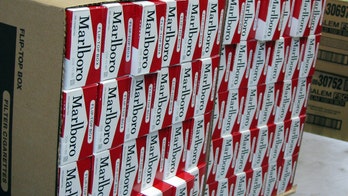Despite several recent, well-documented cases of food stamp fraud -- including a couple in Washington State living in a $1.2 million home, 30,000 college students on the food stamp rolls in Michigan and Wisconsin beneficiaries selling their cards on Facebook -- an inspector from the U.S. Department of Agriculture told the House Oversight and Government Reform Committee on Thursday that food stamp fraud is decreasing.
When pressed about the trend by Rep. Elijah Cummings, D-Md., Kevin Concannon, undersecretary for food, nutrition and consumer services at the U.S. Department of Agriculture said that fraud cases have dropped to an all time low record of less than 1 percent.
"It's one of the best records among federal programs," he said.
Even so, food stamp fraud has gotten more sophisticated, moving away from the simple petty crimes of coupon days, when recipients would trade coupons for cash in grocery store parking lots, to more elaborate schemes designed to swap easily traceable swipe cards for unauthorized goods.
Kenya Mann Faulkner, Pennsylvania inspector general, gave the committee an example of one type of fraud recently uncovered in her state. "A recipient will go to a restaurant or bar -and this is not a place where they would accept electronic banking cards - and the restaurant or bar would go to a grocery store and buy, say, $200 worth of groceries."
She told the committee the restaurateur typically then shares the groceries with the food stamp recipient - groceries that include unauthorized items, such as cigarettes, liquor or junk foods deemed inappropriate by the USDA.
Witnesses told the committee that food stamp fraud tends to proliferate, not in chain grocery stores, but in mom-and-pop stores. Statistics show, they said, that the more liquor and cigarettes sold, the greater the likelihood of food stamp fraud. Even when the fraud is investigated and stores are shut down - they're often re-opened by family, friends or the same person using a fraudulent application.
Even so, tougher enforcement in some impoverished areas presents its own problem.
"Do you really want to shut down the only source of groceries in a neighborhood? I think you ought to be very careful about that," says Michael Tanner of the Cato Institute, who's written extensively about food stamps, or the Supplemental Nutrition Assistance Program, as it's now called.
Tanner says the larger problem is the expansive growth of the SNAP program itself - largely a result of increasing laxity of eligibility requirements. "What we are getting into is part of an overall process where more and more people are becoming dependent on the government for larger and larger portions of their income. What we need to do is restore a little bit of the self reliance that we used to have," he says.
In the 1970s, about one in 50 Americans participated in the program. Today, it's almost 1 in 7. One congressional critic, Sen. Jeff Sessions, R-Ala., thinks the states have a disincentive to reduce fraud - the more they crack down on it, the fewer federal dollars they receive.




